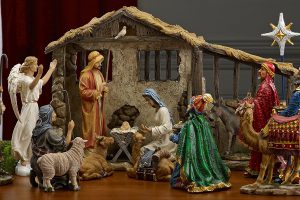
There is no gainsaying the fact that the Ethiopian Timket (Epiphany) is celebrated once a year colorfully on a national scale by the faithful.
To observe Jesus Christ’s Baptism by Saint John in the Jordan River, all and sundry irrespective of age, sexual category, ethnicity, religion, political point of view and whatnot involve themselves in the celebration that takes place in their respective areas.
Though Timket shares some features with Epiphany, the way of the festivity and the day on which it falls marks a visible difference. The word “epiphany” means “appearance” or “manifestation”. Encyclopedia Americana similarly puts the same word: “a feast of Christian calendar celebrated in January”.
The meanings in both cases are alike “appearance or becoming manifest”. However, the word is further elaborated: “The observance originated from the total revelation of God in Christ, later it focused upon two events of Jesus’ ministry, his baptism and the changing of the water into wine at Cana of Galilee.
While on the subject, during the celebration, all family members living in the length and breadth of the country get together to celebrate the festivity. Epiphany has quite a lot of economic implications for the reason that several tourists come from various parts of the world to partake in the celebration which takes account of religious ceremonies, traditional songs, spiritual dances, spiritual songs and what have you.
Timket is also an observance of Jesus’s baptism at the age of 30. The above premises support that Timket remains a subset of epiphany. However, epiphany has a closer meaning to what EOC called Zemene Astereyo.
It covers the period from January 17 to a week before the fast of the Great Holy Lent (Talaku Ya’abiy Tsome) as Zemene Astereyo, a period of manifestation, of Man becoming God, and God’s becoming man through Jesus. Therefore, this period comprises Jesus’s birthday, His baptismal day and Cana of Galilee. This shows that Timket could be a subset of Epiphany but could not be synonymous with Epiphany.
Every year, the celebration of Ethiopian Epiphany brings into being with the ceremony of Ketera, which occurs on the eve of Epiphany. More often than not, the day occurs two weeks after the celebration of the Ethiopian Christmas holiday.
From the outset, each church observed Timket in its vicinity. As of 6th century AD, during the reign of Atse Gebre-Meskel, a new tradition of taking the arc to riversides emerged True to Jesus’ trek to River Jordan. During the reign of Yekunoamlak (1208-1265) with the support of Saint Tekle-Haimanot a decree came out to further observe the day with added color.
But each church celebrated the holiday separately before the time of King Lalibella. Thus, King Lalibella (1156-1197), declared that churches found in the same locality should celebrate the day at the same place, and during the reign of Atse Zerayakob (1426-1440), the king ordered that the arcs should be taken to riversides on the eve of the holiday.
However, it was Atse Naod who declared the people to accompany the arc when it goes to riversides as well as when it returns to it’s a parish. Therefore, as of the 15th century, this practice seemed to have spread to the rest of Ethiopia. Following the founding of Addis Ababa by Atse Menelik II and his wife Etege Taitu in 1886, the celebration started to be marked in Janhoy Meda, northeastern Addis Ababa.
If truth be told, the countless advantages we secure out of the celebration can be used for conflict resolution, building the good image of the country, developing and upholding the harmony as well as the cohesion of the general public. The celebration of Epiphany also plays a major role in promoting traditional, economic and religious values.
Most of the congregations show up at the celebration adorn themselves head to toe with attention-grabbing Ethiopian traditional clothes seeing that the festivity is a jubilant moment for the people of Ethiopia given that it creates a social cohesion and a sense of identity.
Ethiopian Epiphany is one of the uppermost festivities that the faithful of the Ethiopian Orthodox Tewahedo Church observes on the street.
There are several sites that the Timket celebration takes place. In addition, magnificent celebrations are carried out across the nation while the grand-most ones are in Addis Ababa and Gondar.
According to the traditions of the church, every year the feast begins from January 17-18 which is called the eve/Ketera. Ketera comes from the word Ketere, means to block, to block water from flowing or to go to the baptismal ceremony. It has also a meaning to close, to block or to prohibit.
Ketera by itself is a special holiday, although it remains an integral part of Timket. The water is collected and sanctified in readiness for sprinkling over the heads of all believers on the morrow, which is Timket proper.
On this day, the arcs carried from each (parish) church are escorted by the priests to the selected spot for marking Timket. The places could be by riversides or around artificial pools like the one in Janhoy Meda.
On the second day, the holy arc is carried back to its place accompanied by joyous and reverential singing, dancing … on one side of the event the clergy do the Celestial proceedings, and on the other side, the people conduct various cultural activities. The numerous social activities allow people to participate irrespective of gender, age, class….
In Addis Ababa, all the EOC churches bring their Tabots to Janhoy Meda, an open meadow near Martyrs’ Square. At one end of Janhoy Meda is a special Timket pool. Around this pool colorful tents are seen pitched, flying the banners of their churches. There are also pavilions where delicacies or refreshments are sold, especially the beverages Tella and Tej, another sweet but alcoholic drink. A religious tradition calls for spending the night near the tents, where the Tabots are placed. People from surrounding villages bring food and drink. Torches are lit and fires burn everywhere. The elders and clergy pray while the younger people sing and dance.
Early on the morning of Timket, the priests gathered around the pool, light many candles, and celebrate the last part of the ceremony. And after making Timket proper, the priest’s sprinkle water upon the gathering, also in some places people dip in the water. But, it seems that both ways have no doctrinal conflict.
Among the factors that make the celebration unique is its occurrence at the sunniest and loveliest time of the year. It coincides with the harvesting season and is a time of bounty and plenty. As such it is a time of rejoicing particularly for the farmers: Tella, Ethiopian homemade beer, is brewed and fattened sheep are slaughtered to add glamour to the array of dishes prepared in connection with the ritual. The celebration of Timket dates centuries back. And it has turned a relay over generations. Among other factors, this has made it evolve into popular secular culture.
And the religious and secular activities that co-occur during the celebration day have left room for every segment of the society to carry out various social activities, particularly after the arcs go back to their respective parish.
Therefore, playing Guks, a hokey like the game, taking time with a lover or with a new lover in which couples manage to know each other during the event, as usual. In places like South Wollo, for instance, the female holds an aromatic herb called Ariti and males dance around her competing to receive the herb from her hands, and she gives it to the one she favors most—the one she wishes to be her husband.
And in most rural places young men throw lemon on the ones they love, and she either expresses her agreement or refusal. Lemon is chosen because it has a wide acceptance as a sign of good aroma. In other rural places, males hold lemon when they go to the ceremony and throw it to the one they favor. And she responds to that either by agreeing to be his wife or ignore the act by way of refusal.
The Ethiopian Herald Friday 17 January 2020
BY ADDISALEM MULAT AND WORKU BELACHEW





